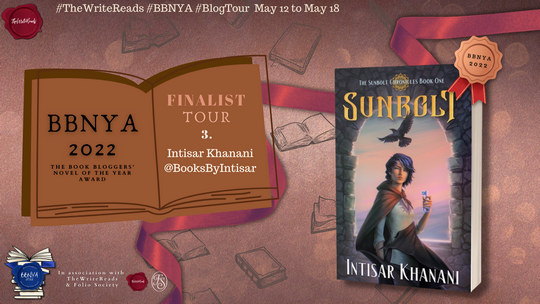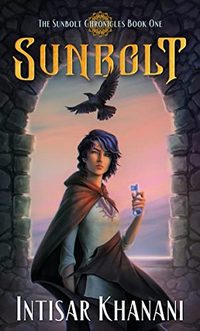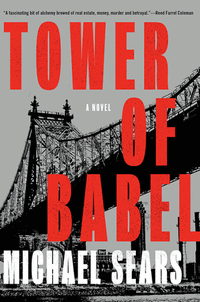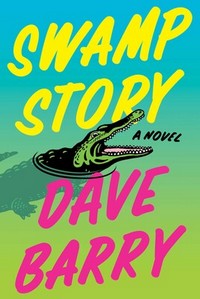Come back this afternoon for a Q&A with the author, Michael Sears, it’s a good one.
Tower of Babel was published a month ago, and I was trying to get this posted in that first week. I missed significantly, and I wanted to start things off by apologizing to Michael Sears and Wiley Saichek, the publicist that connected me with Sears, for that.
by Michael Sears
DETAILS:
Series: Ted Molloy, #1
Publisher: Soho Crime
Publication Date: April 6, 2023
Format: ARC
Length: 394 pg.
Read Date: March 27-29, 2023

What’s Tower of Babel About?
I really don’t like not providing my own synopsis/tease for a novel. But I’m overdue with this post, and a lot of that has to do with stumbling on this section. So I’m going to appropriate it from Soho Press’ site:
Queens, New York—the most diverse place on earth. Native son Ted Molloy knows these streets like the back of his hand. Ted was once a high-powered Manhattan lawyer, but after a spectacular fall from grace, he has found himself back on his home turf, scraping by as a foreclosure profiteer. It’s a grubby business, but a safe one—until Ted’s case sourcer, a mostly reformed small-time conman named Richie Rubiano, turns up murdered shortly after tipping Ted off to an improbably lucrative lead.
With Richie’s widow on his back and shadows of the past popping up at every turn, Ted realizes he’s gotten himself embroiled in a murder investigation. His quest for the truth will take him all over Queens, plunging him into the machinations of greedy developers, mobsters, enraged activists, old litigator foes and old-school New York City operators.
Haaaaave You Met Ted?*
* Sorry, I couldn’t resist. Not that I tried all that hard.
Ted’s a good example of a very familiar type of Crime Fiction protagonist. At one point in the not-too-distant past, he’d been very successful for his age with a bright future ahead of him. Then he hits a personal and professional rough patch, and all that success and future vanishes. He’s now had to recalibrate his life, his legal career in ruins and so begins a new—albeit somewhat related—career, with new routines, a new home, new allies, and so on to restart his life.
Like most of this type, he’s moved on, but not really. He still misses his old life, still laments it, regrets the things that happened (unjustly) to bring down his house of cards, and would go back if he could. He’s given chances over the course of Tower of Babel to revisit that life, to see how green the grass is on that side of the fence, and his response to that really tells the reader more about who he is than anything else in the book can.
In a New York State of Mind
I love when a novel hits me with a great sense of place—and Tower of Babel did that to me. Sears doesn’t spend that much time describing the city or its landmarks or anything like that. But the city permeates everything. Travis Bickle drove the same streets as Mohammad did (and probably in a safer manner). Sherman McCoy struck deals with the same kinds of people. Det. Denny Malone would be known to the detectives on the murder.
This is a novel that has to take place in New York.* I just don’t see it working anywhere else—are there shady real estate deals, corrupt politicians, organized crime, and entities with too much power in Chicago, Miami, L.A., Boston, London, etc.? Absolutely. Do other major cities have teams that have a fanbase as devoted and as constantly disappointed as the Mets? Absolutely (although most of them don’t have to share a city with the Yankees). Ethnic diversity and economic disparity might have different mixes and present in different ways from metropolitan to metropolitan, but they’re there just the same. But I just don’t see how this novel works in Miami or Boston. The organized crime of it all would be different in Chicago. There’s something about shady real estate antics that seems quintessentially NYC (it shouldn’t, but it does).
* Granted, I’m just some dude from Idaho, what do I know?
Any book that transports me so convincingly is worth the time and effort (not that this took much of the latter).
Ted and Jill
Ted is still friends with his ex-wife, Jill. They’re obviously very important to each other and spend a good deal of time together—primarily because of the NY Mets and Ted’s season tickets. I absolutely loved this version of divorced adults interacting with each other (there were no kids involved, which likely helped). Early on, when I wasn’t as sold as I eventually would be on the murder storyline (and was still trying to understand the real estate angle), I put in my notes that I’d have enjoyed the novel more if it was just about them spending time together. By the novel’s end, I’d changed my mind—but I’d still take a novella just about the two of them.
It’s a healthy friendship, supportive and challenging—and just fun. (then again, this is a noir-ish Crime Novel, so I make no promises that the way things start is the way they will end).
So, what did I think about Tower of Babel?
I stumbled a little in the beginning trying to understand the way that Ted’s making his money now and the antics involved in all the real estate transactions (ethical, legal, and otherwise), but that’s primarily because my brain doesn’t do well with that sort of thing. I ultimately gave up trying and just accepted it in the same way I do with Asimov’s worldbuilding or things along those lines. By the end of the novel, I (am pretty sure that) I understood it all because I’d stopped trying to decipher it (I still can’t totally explain psychohistory or Asimov’s take on superluminal flight, for what’s it’s worth). The details are both not as important to the novel as everything else and not as difficult as I was making it.
I can see Sears settling into this character and this world and turning Molloy into a typical scrappy lawyer character in the vein of Mickey Haller or Eddie Flynn. But I don’t think that’s the direction this is going—would I read that version? Absolutely, but I already have Haller, Flynn, et al. It feels to me that this is headed in a more David vs. Corporate Goliaths tack, maybe with some murder, etc. thrown in, sure—but my money is on this series focusing on corporate crimes, and corruption (both political and economic). Either way, I’m in for at least one or two more books—and I expect most readers will feel the same way.
This is not your typical Legal Thriller, and Sears sucks you into the story in ways you won’t expect—actually, I think you’ll end up expecting very little about the story and characters as you go along. But in the end, you’ll realize that just about everything had to go the way it did. I love that feeling of being taken unaware and then seeing that there was no other way for this jigsaw to be put together. It’s so satisfying when you can look at the whole thing (and a great ride along the way).
Crimes you’re not accustomed to reading about—crimes you’re very familiar with—a cast of characters you don’t see every day, and an ethically dubious protagonist (or is he?). Tower of Babel is a great entryway into a series that should garner a fanbase, and you should think about hopping on before the bandwagon builds up too much speed.
Disclaimer: I received this ARC from the author via Wiley Saichek and Saichek Publicity in exchange for this post—while I appreciate that, the opinions expressed are wholly mine.

This post contains an affiliate link. If you purchase from it, I will get a small commission at no additional cost to you. As always, the opinions expressed are my own.

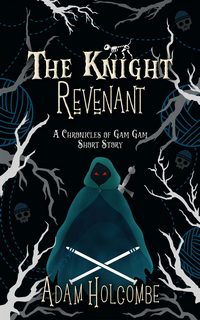 The Knight Revenant
The Knight Revenant

![]()


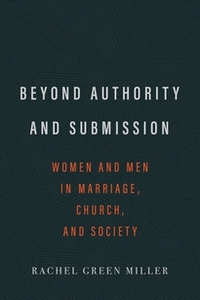
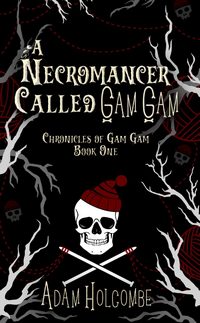
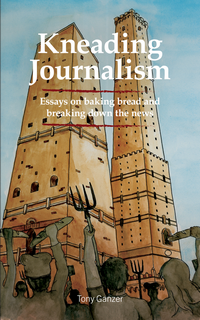
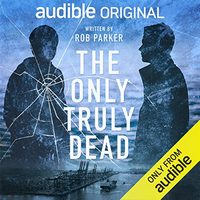
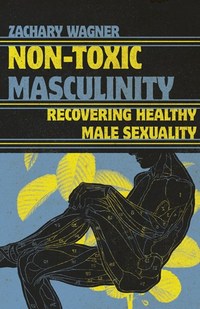
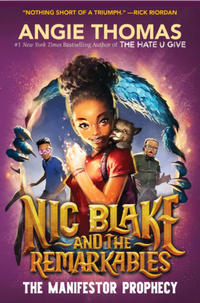
 As all good Fantasy readers know, there’s a plethora of books (especially for MG audiences) with magic systems largely based on African American myths and folklore. It’s the same old-same old here, give me some WASP-y fantasy!
As all good Fantasy readers know, there’s a plethora of books (especially for MG audiences) with magic systems largely based on African American myths and folklore. It’s the same old-same old here, give me some WASP-y fantasy!